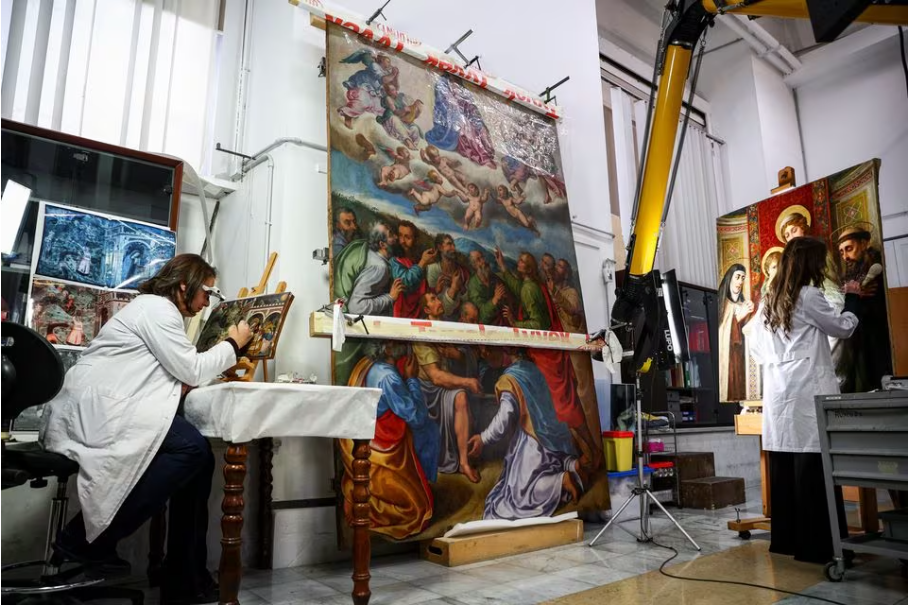
©REUTERS/Guglielmo Mangiapane
Vocabulary:
- chapel /CHAP-uhl/
- meticulous /muh-TIK-yuh-luhs/
- humility /hyoo-MIL-i-tee/
- exhaustive /ig-ZAWS-tiv/
- intent /in-TENT/
[noun] – a room that is part of a larger building and is used for Christian worship
The hospital complex featured a serene chapel where patients and staff sought solace and reflection.
[adjective] – very careful and with great attention to every detail
The architect showed meticulous attention to detail in every aspect of the building’s design.
[noun] – the quality of not being proud because you are aware of your bad qualities
His humility impressed everyone, as he never boasted about his accomplishments.
[adjective] – complete and including everything
The research involved an exhaustive study of historical documents spanning several centuries.
[noun] – the purpose or aim behind a particular action or effort
Her intent in joining the charity organization was to help underprivileged children access education and healthcare.
Article reading:
This formal gesture granted select news organizations rare access to witness firsthand the profound commitment of this restoration lab to the preservation of our cultural legacy. Francesca Persegati, the lab’s director, highlighted the enduring evolution of restoration techniques, often necessitating the rectification of previous inadequacies by less experienced artisans. Emphasizing values of reverence and humility toward the original artwork, Persegati underscored the imperative need for an in-depth scientific understanding of artistic materials. Prior to restoration work, exhaustive examinations utilizing non-invasive methodologies like ultraviolet and infrared scans meticulously scrutinize for potential alterations or concealed sketches. This concerted effort, aligned with the centenary commemoration, unveiled QR codes positioned adjacent to 37 selected artworks, offering visitors an opportunity for deeper insight into the restoration process with the intent of demystifying and enriching appreciation for the assiduous labor devoted to conserving these priceless artistic treasures.
Discussion Questions:
- Have you ever visited a museum or an art restoration facility? If yes, what was your experience like? If not, would you be interested in exploring such places?
- If you were part of the restoration team at the Vatican Museums, what steps or precautions would you take to ensure the preservation of delicate artworks?
- Do you believe that modern restoration techniques and technologies significantly contribute to preserving the authenticity and historical value of ancient artworks?
- How important do you think the preservation and restoration of cultural treasures are for future generations?
- What might be the potential consequences if preservation and restoration of cultural treasures were neglected or poorly executed?
Summarization
Describe:
- masterpiece
- restoration
- firsthand
- artisan
- preservation